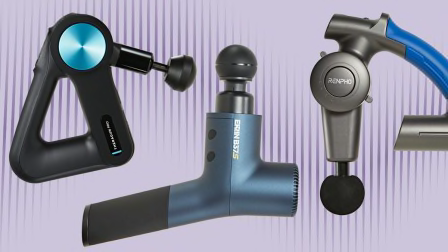Best Cardio Machines to Meet Your Fitness Goals
Should you use a treadmill, an elliptical, an exercise bike, a rowing machine, or a stair climber? Well, that depends. Here, expert advice on how to choose.
When you shop through retailer links on our site, we may earn affiliate commissions. 100% of the fees we collect are used to support our nonprofit mission. Learn more.

Whether you are going the gym or trying to pick out the best cardio machine for your basement, there’s one simple answer to the question of which exercise machine is the best: the one you will use regularly.
“If you buy a piece of equipment you don’t like, then it’s going to be a really expensive coat rack,” says Paula Papanek, PhD, professor and founding director of the exercise science program in the department of physical therapy at Marquette University in Milwaukee. “If you don’t like to run or walk, buying a treadmill is probably not your best investment.”
You can get a great workout on any type of machine, according to Sabrena Jo, senior director of science and research at the American Council on Exercise. And the workout you get from a particular cardio machine depends partly on your own fitness, exercise intensity, and the machine being well set up for the user’s body mechanics, Jo says.
Yet there are factors that might give some types of exercise machines an edge for you personally. Certain people have physical limitations that might make an elliptical or an exercise bike a better choice than a treadmill or a rowing machine (known as a rowing ergometer, or just an “erg”), for example. Others may be looking to train for a specific event, like a 100-mile “century” bike ride. And others may be looking for the best full-body workout or the quickest ways to burn a large number of calories.
We’ve spoken to a number of experts about the benefits and potential limitations of popular cardio machines, plus what people should know before trying a machine for the first time. Still, if you’re looking to purchase exercise equipment for your home, you should go to a gym and try it first. You don’t want to bring home an exercise bike only to realize you can’t stand cycling.
Treadmill
Best for: If you like to run or your goal is to participate in a race, your best option is a treadmill, says Michael Rogers, PhD, professor of human performance studies and research director for the Center for Physical Activity and Aging at Wichita State University in Kansas. “If you train for a running race on a bike, you’ll get a little better,” he says. “If you run to train, you’ll get a lot better.”
Elliptical
Best for: Ellipticals are much lower-impact machines than treadmills, which make them a good choice for anyone looking for a low-impact cardio workout, such as people recovering from certain injuries.
One advantage to these machines is that they can often work both the upper and lower body at the same time. For people who just hold on to the handles, they still provide some passive movement for the shoulders. That can help people work on their range of motion with those joints even when they’re not actively pushing or pulling with them, Papanek says.
Not ideal for: While you can push yourself to a high intensity on any machine, ellipticals included, elliptical workouts often tend to be somewhat less intense, Rogers says. There are better choices for people who want the most efficient workout. Because the range of motion on an elliptical is limited, some very tall people have trouble fully extending their hips and legs on these machines, according to Jo.
Like a treadmill, an elliptical can take up a large amount of space, and require even more room over your head. So an elliptical might not be a great choice for someone looking to put a machine in a small room or a basement with a low ceiling, Galeotafiore says.
Know before you try: Trying an elliptical before you buy it is especially important because you have to make sure the ergonomics work for you. Check to make sure you are able to comfortably maintain an upright posture while holding on to the handgrips. As the machine moves through its path, your wrists, arms, shoulders, and knees should be able to comfortably mimic a running motion.
Consumer Reports tests ellipticals for ergonomics, exercise range, and ease of use. Here are two top picks. (All Access members can also see our full list of the best ellipticals.)
Exercise Bike
Best for: Exercise bikes are versatile machines where the rider generally doesn’t need to support their own weight. They can provide a very intense workout, or can be used at much lower intensities for people recovering from injuries or just getting started on their fitness journey. Because they are low-impact and not weight-bearing, they’re much better for people with knee issues than an exercise machine like a treadmill, Rogers says. Modern bikes can often connect to entertaining spin classes or group workouts, which can help boost motivation.
Bikes are also generally more compact than other cardio machines, so they may be a better fit for smaller spaces, Papanek says. Some can even be stowed in a closet.
Not ideal for: Some people with back pain may have a hard time with certain bikes. If you have back issues, you’ll want a bike you can stay more upright on, not one that forces you to lean forward. People with more serious back issues or balance issues may want to consider looking at recumbent bikes, which allow you to pedal from a reclined position.
Know before you try: Ensuring you have the right fit on an exercise bike is important, Rogers says. You’ll want to make sure that when the pedal is down, your leg is almost fully extended.
Consumer Reports tests exercise bikes for adjustability, data interface, and features. Here are two top picks. (All Access members can also see our full list of the best exercise bikes.)
Rowing Machine (Ergometer)
Best for: By using most of the muscles in your body, an erg can provide a vigorous full-body workout, Papanek says. That’s great for people who want to exercise both their lower and upper body and who want to burn calories, because the key to burning calories is using the largest amount of muscle possible, she says. And while it’s meant to be a full-body workout, ergometers can be used in a way that will work out only the legs or arms, if you are looking for some variety.
Many erg machines can also be stored in ways that use less space than many other options.
Not ideal for: Some people with lower-back problems may find the problems aggravated by using a rowing machine, Jo says. This is also a pretty specific sort of workout, so you’d definitely want to make sure you give it a shot before investing in one for home.
Know before you try: If you’ve never been on an erg before, you may want to have someone show you the ropes, so you understand how to get the best workout—proper form is key if you want to generate the most power. You should know that most of your driving force comes from your legs; these are not primarily upper-body machines, Rogers says.
Stair Climber
Best for: Stair climbers (also known as stair steppers or by the brand name StairMaster) can provide a very intense workout—especially the stepmill kind, which requires users to lift their feet off the machine with each step. These look like a moving staircase and allow users to achieve an intensity similar to what they’d get with a treadmill, Rogers says. Plus, the machines often take up less floor space than treadmills, though they require more overhead space.
Many stair climbers also incorporate some sort of upper-body component, which can help people get a full-body workout, Papanek says.
Not ideal for: If you hate walking up the stairs, these aren’t going to be a great home gym purchase. Because they are weight-bearing and some of them require some impact as you lift your feet off the step, people with certain knee or back issues could find them uncomfortable. (Some stair machines, which look more like two paddles that go up and down with your feet, don’t require you to lift your feet and are lower-impact.)
Know before you try: Papanek suggests repeatedly walking up the steps of an office building to get a feel for stair climbers if you can’t try one in the gym. If you don’t consider that a fun workout, you probably won’t enjoy the stationary version, either. (Consumer Reports does not currently test stair climbers.)
Other Options
There are a number of other cardio machines out there, including ski machines, underdesk pedals, and arm ergometers.
But in general, the same principles apply. You should pick a machine that you can use without discomfort or pain, and one that fits your goals, whether that’s getting a bit of aerobic exercise, rehabbing your body from an injury, or training for a half-marathon.
As always, the best cardio machine is going to be the one you enjoy using enough to get into a routine—and stick with it.




















